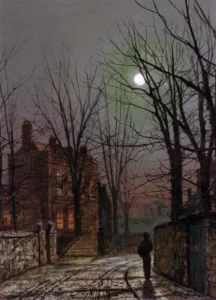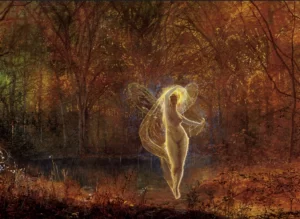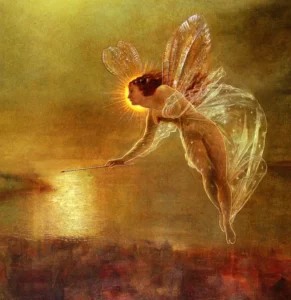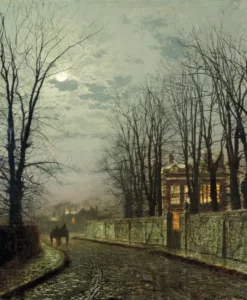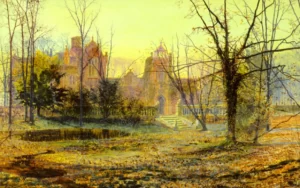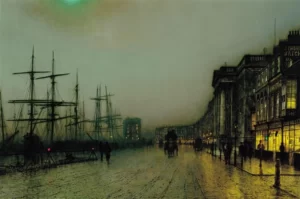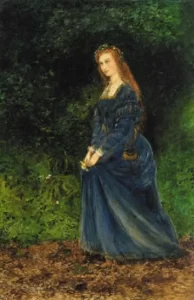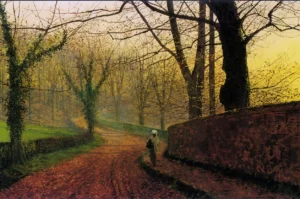Some suggestions (236)
Edmund HartleyCunning man who is alleged to have practised witchcraft at Cleworth Hall in Lancashire
Padiham witchConvicted witch who escaped the death penalty because she had caused no harm to anyone.
Samlesbury witchesThree women from the Lancashire village of Samlesbury accused by a 14-year-old girl, Grace Sowerbutts, of practising witchcraft. All three were acquitted.
The Wonderfull Discoverie of Witches in the Countie of LancasterAccount of a series of English witch trials that took place on 18–19 August 1612, commonly known as the Lancashire witch trials.
Elizabeth Raffald18th-century English entrepreneur, author of
The Experienced English Housekeeper, and possible inventor of the Eccles cake.
Elizabeth Ann LinleySinger who possessed great beauty, subject of several paintings, poet and writer.
Warrington Perambulating LibraryThe Warrington Perambulating Library has been described by historian Ian Orton as “one of the most revolutionary library advances of the nineteenth century”.
Paisley witchesAlso known as the Bargarran witches or the Renfrewshire witches, were tried in Paisley, Renfrewshire, central Scotland, in 1697.
Alhambra Theatre, ManchesterFormer theatre in Higher Openshaw, Manchester, England designed by the architect H. A, Turner. Intended for use as a music hall, it was opened in 1910 as part of the H. D. Moorhouse Theatre Circuit.
James BurtonJames Burton (1784–1868) was the owner of several cotton mills in Tyldesley and Hindsford in the mid-19th century.
Emily FordEmily Susan Ford (1850–1930), artist and campaigner for women’s rights, was born into a Quaker family in Leeds. She trained as an artist at the Slade School of Art and exhibited at the Royal Academy.
Mary TaylorEarly advocate for women's rights, born in Gomersal in the West Riding of Yorkshire, England, (1817–1893).
Manchester Free LibraryFirst library to be set up under the provisions of the Public Libraries Act 1850, in Manchester, England, which allowed local authorities to impose a local tax of one penny to pay for the service.
Elizeus HallSixteenth-century prophet and false messiah who claimed to be a messenger from God.
Marshall StevensProperty developer whose work with Daniel Adamson and others led to the construction of the Manchester Ship Canal, completed in 1894.
Ernest Terah HooleyErnest Terah Hooley (5 February 1859 – 11 February 1947) was an English financier who specialised in acquiring companies and then reselling them at inflated prices, making himself substantial profits in the process.
Robert SoutheyRobert Southey (12 August 1774 – 21 March 1843) was an English poet of the Romantic school, one of the Lake Poets along with William Wordsworth and Samuel Taylor Coleridge, and England's poet laureate for 30 years from 1813 until his death in 1843
Wakefield CastleFortification built in the 12th century on a hill on the north side of the River Calder near Wakefield, England.
John Gregorson CampbellScottish folklorist and Free Church minister at the Tiree and Coll parishes in Argyll, Scotland.
Florence NagleTrainer and breeder of racehorses, a breeder of pedigree dogs, and an active feminist
James Ferguson, 1st Laird of Pitfour
Scottish lawyer and the 1st Laird of Pitfour, a large estate in the Buchan area of north-east Scotland.
James Ferguson, Lord PitfourScottish advocate and second Laird of Pitfour, a large estate in Buchan. He was elevated to the bench in 1764.
James Ferguson (Scottish politician)
James Ferguson (25 May 1735 – 6 September 1820) was a Scottish advocate and Tory politician and the third Laird of Pitfour, a large estate in the Buchan area of northeast Scotland, which is known as the 'Blenheim of the North'.
George Ferguson (Lt Governor of Tobago)
George Ferguson (1748 – 29 December 1820) was the fourth Laird of Pitfour, a large estate in the Buchan area of Aberdeenshire, Scotland which became known as The Blenheim of the North.
George Ferguson, 5th Laird of PitfourScottish naval officer and Tory politician; also known as "The Admiral" or "The Sailor" to differentiate him from his father.
George Arthur Ferguson, 6th Laird of Pitfour6th and final laird of the Pitfour estate in Aberdeenshire, the Blenheim of the North
John GreenwoodJohn Greenwood (1788–1851) was the keeper of a toll-gate in Pendleton on the Manchester to Liverpool turnpike, who In 1824 inaugurated the United Kingdom’s first omnibus service.
Jamie FleemanProbably the last Scottish family jester, better known as "the Laird of Udny's Fool" or "the Laird of Udny's Fule"
David GregoryScottish physician and inventor accused of witchcraft. He inherited Kinnairdy Castle in Banffshire.
Jennifer WestwoodBritish author, broadcaster and folklorist.
Henry Ernest MilnerEnglish civil engineer and landscape architect
Thomas LinleyEnglish tenor, musician and composer whose musically talented children were described as "a Nest of Nightingales".
John Kincaid, witch finderProfessional witch-finder or pricker of witches based in Tranent, East Lothian.
John HolkerJacobite soldier, industrialist, and one of the world's first industrial espionage agents.
William Henry GauntEnglish transport engineer who began his working life developing and building gas-powered trams.
Bartholomew BinnsEnglish executioner from November 1883 to March 1884.
Norah WilmotFirst British woman racehorse trainer to officially train a winning horse. Her historic win came with her filly Pat, at Brighton in August 1966, just one day after she became one of the first two women to be granted a training licence by the Jockey Club.
Alice NutterOne of the 11 men and women found guilty of causing harm by witchcraft in the Pendle witch trials of 1612, unique among the accused in being a respectable wealthy widow.
George Ogilvy, 3rd Lord BanffInherited the lands of Inchdrewer and Montbray in 1668. He was murdered and his body burned at Inchdrewer Castle in 1713.
Christopher SaxtonEnglish cartographer who produced the first county maps of England and Wales.
Dorothy LevittFirst British woman racing driver and a women’s world land speed record holder. In 1905 she also established the record for the longest drive by a lady driver when she drove a De Dion-Bouton from London to Liverpool and back over two days.
William Calcraft19th-century English hangman, one of the most prolific British executioners.
Evelyn ManestaAlias used by one of the three suffragettes arrested for damaging with hammers the glass of thirteen pictures in Manchester Art Gallery on 3 April 1913.
Ernest W. MarwickScottish writer, folklorist and antiquarian particularly noted for his texts on Orkney folklore and history
Richard GrahamSorcerer, necromancer and wizard. Executed on the last day of February 1592 as part of the North Berwick witch trials, he was an associate of Francis Stewart, fifth Earl of Bothwell.
Jane WenhamLast person to be condemned to death for witchcraft in an English court, when she was found guilty at Hertford in 1712.
Mary Pownall BrometSculptor born in 1862 Leigh, Lancashire, where her father, James Pownall, was a silk manufacturer.
Joseph Denison (banker)Wealthy banker and owner of the Denbies estate in Surrey.
Samuel LinleyOboist, singer and junior naval officer. A member of the musically talented Linley family fathered by Thomas Linley, Samuel first performed on stage in 1766.
Gertrude AgnewBiography of socialite Gertrude Vernon, Lady Agnew of Lochnaw, who gained prestige and notoriety from her portrait by artist John Singer Sargent.
Roger HampsonPainter, printmaker, teacher and a member of the group of post-war northern artists who developed the realist tradition established by L S Lowry and Harry Rutherford.
William HultonLandowner who lived at Hulton Hall in Lancashire, notorious for his part in the Peterloo Massacre.
Dorothy LeghBorn Dorothy Egerton (1565–1639), also known as Dorothy Brereton, Lady of the Manor of Worsley, was a coal owner and benefactor of Ellenbrook Chapel near her home in Worsley, Lancashire.
Statute of Silence 1581Act of Parliament introducing a series of increasingly gruesome punishments for speaking or publishing anything that Queen Elizabeth I did not wish to hear.
Matthew HopkinsEnglish witch-hunter who claimed to hold the office of Witchfinder General, although that title was never bestowed by Parliament.
Diana BeaumontEldest illegitimate daughter of Sir Thomas Wentworth of Bretton Hall near Wakefield in Yorkshire.
Anne JefferiesYoung Cornish servant girl endowed with the power to heal and prophetise after being visited by fairies
Frederic LeightonEnglish painter, knighted in 1878.
Dorothy DeneEnglish stage actor and a protégé of Frederic Leighton, for whom she modelled for several of his paintings.
Thomas GainsboroughPortrait and landscape painter, founding member of the Royal Academy of Arts.
Mathematical BridgeFootbridge across the River Cam in Cambridge, England, connecting two parts of Queens' College, built using seven shorter lengths of straight timber to form an arch.
John William WaterhouseEnglish artist known primarily for his depictions of women set in scenes from myth, legend or poetry. He is the best known of that group of artists who from the 1880s revived the literary themes favoured by the Pre-Raphaelites.
Thomas TyldesleySupporter of Charles I and a Royalist commander during the English Civil War.
Pendle witchesThe trials of the Pendle witches in 1612 are among the most famous witch trials in English history, and some of the best recorded of the 17th century.
Isabella WaterhouseEnglish portrait painter; mother of John William Waterhouse
William WaterhouseEnglish artist; father of John William Waterhouse
Ethel BeattyEthel Beatty was a socialite and member of the aristocracy.
Peter BeattyEnglish racehorse owner, businessman and aristocrat
Jack CrouchEnglish racing jockey who died in an aircraft crash in 1959.
Southport PierPleasure pier in Southport, Merseyside, England. Opened in August 1860, it is the oldest iron pier in the country.
Esther Kenworthy WaterhouseEnglish artist, specialist in flower painting; her husband was fellow artist John William Waterhouse
Sir John Brunner, 1st BaronetBritish industrialist, philanthropist and Liberal Party politician who, with Ludwig Mond, created the chemical company Brunner Mond.
Lytham PierPleasure and working pier opened in the seaside town of Lytham, Lancashire, England in 1865, demolished in 1960.
Wigan PierArea around the Leeds and Liverpool Canal in Wigan, Greater Manchester, England, a wharf where coal from a nearby colliery was transferred from wagons into canal barges via an iron tippler. It was demolished in 1929.
Antoine WiertzBelgian Romantic painter and sculptor. His output, featuring such macabre scenes as violent suicide and premature burial has persuaded some critics to consider it the work of a madman.
Sabrina (actor)Norma Ann Sykes, better known as Sabrina, was a 1950s English glamour model who went on to have a minor film career; she is best known for her hourglass figure.
Emma Lister-KayeColliery owner in Overton near Wakefield in the West Riding of Yorkshire from 1871 until 1905.
Caphouse CollieryEx-colliery in Overton, near Wakefield, West Yorkshire, now the National Coal Mining Museum for England.
Witches of BelvoirMother and her two daughters accused of causing the deaths by witchcraft of two young nobles, Henry and Francis Manners.
Walter Traill DennisonOrcadian folklorist and antiquarian
Elizabeth Francis, witchEnglish woman tried three times for witchcraft, hanged in 1579 for bewitchment and murder by witchcraft.
Thomas Hayton MawsonEarly 20th-century garden designer, landscape architect and town planner.
The examination and confession of certaine Wytches at ChensfordeFirst pamphlet describing witchcraft trials in England; it covers the testimony of witches at Chelmsford Assizes in 1566.
Agnes Waterhouse, witchElderly Essex woman convicted and hanged for witchcraft at Chelmsford in 1566.
A Detection of Damnable DriftesSixteenth-century pamphlet describing prominent Chelmsford witchcraft trials against Elizabeth Francis and others
Sweet Fanny AdamsEnglish phrase that means "nothing at all", but Fanny was a real person, brutally murdered in 1867.
Elleine Smithe, witchEssex woman convicted and hanged for witchcraft in 1579
Ralph of CoggeshallAbbot of Coggeshall Abbey and a major contributor to the early history of England known as the
Chronicon Anglicanum, in which he included several anecdotes that have become folk tales.
Joseph Noel PatonScottish artist, illustrator, antiquary, poet and sculptor.
Joseph Neil PatonDamask designer and antiquarian with large collection containing witchcraft objects, including the skull of Lilias Adie. Father of the artist Joseph Noel Paton.
John FianSchool teacher convicted of witchcraft in 1590, a central figure in the North Berwick witch trials.
Harry ListonEnglish comedian and actor.
Annie KenneyEnglish working-class suffragette, the poster girl of the Women's Social and Political Union.
Byrom, Allen, Sedgwick and PlaceThe first bank in Manchester, founded in 1771. It collapsed in 1788 when one of its major borrowers declared bankruptcy.
Thomas Lyon-Bowes, Master of Glamis (born 1821)The official record states that Thomas Lyon-Bowes died shortly after his birth, but rumours have circulated that he was born horribly deformed and raised in a secret room in Glamis Castle, the so-called Monster of Glamis.
Adelaide ClaxtonEnglish painter and illustrator who developed a popular line in ghost paintings during the 1870s. Later in her life she turned her attention to corrective garments such as Claxton's Ear Caps.
William Speirs BruceScottish naturalist, polar scientist and oceanographer who organised and led the Scottish National Antarctic Expedition of 1902–1904.
A Philosopher Lecturing on the Orrery1766 painting by Joseph Wright of Derby, depicting a lecturer giving a demonstration of an orrery.
Imperial War Museum NorthMuseum in the Metropolitan Borough of Trafford in Greater Manchester, England. One of five branches of the Imperial War Museum, it explores the impact of modern conflicts on people and society.
Robert Grierson, witchcraftNamed by several accused of witchcraft during the North Berwick witch trials, Grierson died whilst being tortured during his interrogation.
Vesta VictoriaEnglish music-hall singer and comedian.
George TutillArtist and entrepreneur who started a business at the age of 20, manufacturing banners and regalia.
Pierre Adolphe ValetteFrench Impressionist painter who taught at the Manchester School of Art from 1906 until 1920.
Jinney Bingham, Mother Damnable17th-century woman also known as Mother Red Cap and the Shrew of Kentish Town, suspected of being a witch, a murderer and poisoner.
Vesta TilleyVesta Tilley (1864–1952) was a popular English music hall performer and one of the most famous male impersonators of her era.
Elizabeth Mortlock, witchWoman from the small farming village of Pampisford, in Cambridgeshire, convicted of witchcraft in an ecclestiastical court in Ely in 1566.
Jack SheppardJack Sheppard (1702–1724) was a notorious thief in early 18th-century London, wildly popular with the poorer classes.
Adele MeyerAdele Meyer, Lady Meyer, (1862/3–1930) was an English socialite, social reformer, philanthopist and suffragist.
Sarah BakerEnglish actor, theatre manager, and one of the most successful self-made women of her time.
Chelmsford witchesRedirected to Agnes Waterhouse, witch.
Mother HaggyWitch of St. Albans, best-known for her salve to restore the hymen.
Tyldesley witchRedirected to Edmund Hartley.
Albert PierrepointEnglish hangman who executed between 435 and 600 people in a 25-year career that ended in 1956.
J. S. GrimaldiEnglish stage actor, comedian, clown and dancer.
Mark SheridanEnglish music-hall comedian and singer, whose recording popularised the song "I do like to be beside the Seaside".
Herbert CampbellEnglish comedian and actor who appeared in music hall, burlesques and musical comedies during the Victorian era.
Jack BolognaItalian actor and dancer who did much to popularise the role of Harlequin in Georgian pantomimes.
Donald McGillEnglish graphic artist whose name has become synonymous with the genre of saucy postcards, particularly associated with the seaside.
Mary Eales18th-century writer on cookery and confectionery, author of
Mrs Mary Eales's Receipts (1718)
A Balloon Site, CoventryOil on canvas painting by Laura Knight, portraying a group of people – mainly women – launching a barrage balloon.
Katherine HarleySuffragist who in 1913 organised the Great Pilgrimage, a march along six routes to converge on Hyde Park, London, where a rally in support of women's suffrage was held.
Gladys PottAn English anti-suffragist and civil servant, author of
The Anti-Suffrage Handbook of Facts, Statistics and Quotations for the Use of Speakers
Alice GooderidgeStaffordshire woman convicted of witchcraft in 1596 on the false testimony of an 14-year-old boy.
Witch of StapenhillRedirected to Alice Gooderidge.
Whole trial and examination of Mrs. Mary Hicks and her daughter ElizabethPamphlet purporting to tell the story of Mary Hicks, executed for witchcraft in 1716.
Mary Hicks, witchRedirected to Whole trial and examination of Mrs. Mary Hicks and her daughter Elizabeth.
Elizabeth Hicks, witchRedirected to Whole trial and examination of Mrs. Mary Hicks and her daughter Elizabeth.
BlackbeardEnglish pirate who operated around the West Indies and the eastern coast of America during the early 18th century.
Bargarran witchesRedirected to Paisley witches.
Renfrewshire witchesRedirected to Paisley witches.
James SharplesBlacksmith and self-taught artist whose major work,
The Forge, was completed in 1847.
Colonel John GordonDaubed as "The richest commoner in Scotland", Colonel John Gordon owned estates on mainland Scotland and purchased several Scottish islands
John Simmons, artistEnglish painter and illustrator, recognised as a specialist in painting female fairies, frequently nude.
Robert Huskisson, artistEnglish portrait painter particularly recognised for his fairy paintings.
Boulton and ParkThomas Ernest Boulton and Frederick William Park were two Victorian cross-dressers. In 1870, while in drag, they were arrested after leaving a London theatre. They were charged with conspiracy to commit sodomy, a crime that carried a maximum prison sentence of life with hard labour.
Eyre CroweVictorian painter, principally of genre and historical subjects.
John Henry MoleEnglish artist (1814–1886) who became a professional miniature painter in 1835, later focusing on landscapes and portraits of children.
Martha Bradley18th-century English cook, author of
The British Housewife.
Charlotte de BerryProbably fictional 17th-century female pirate.
Captain RudolphRedirected to Charlotte de Berry.
Nicolas Lawson, witchRedirected to Pittenweem witches.
Frederic W. H. MyersEnglish poet, classics scholar, and founder member of the Society for Psychical Research.
Manchester BankRedirected to Byrom, Allen, Sedgwick and Place.
Andro ManElderly Scottish folk healer executed for witchcraft in January 1598.
William James NeatbyCeramic designer and artist born in Barnsley, Yorkshire, who trained as an architect but changed career and went to work for Burmantofts Pottery.
Mother Red CapRedirected to Jinney Bingham, Mother Damnable
Shrew of Kentish TownRedirected to Jinney Bingham, Mother Damnable
Perran FoundryCornish foundry established in 1791 to supply steam-engine pumps and heavy machinery to mines, waterworks and ironworks.
Florence NormanBritish social campaigner and suffragist.
Samuel Johnson18th-century English writer, critic, editor and lexicographer whose
Dictionary of the English Language had far-reaching effects on the development of Modern English.
Meg SheltonReputed witch whose corpse kept reappearing from its grave until it was covered by a large boulder.
Fylde HagRedirected to Meg Shelton.
Woodplumpton witchRedirected to Meg Shelton.
Eliza Ann SheridanRedirected to Elizabeth Ann Linley
Jane TaylorEnglish children's author (1783–1824), whose best known work is "Twinkle, Twinkle, Little Star".
Joan Cunny, witchOne of the 31 Essex witches, hanged in 1589.
Essex witchesCollective name given to the 31 people accused of witchcraft in the English county of Essex between 1566 and 1589.
Elizabeth FrauncesRedirected to Elizabeth Francis.
Witch of BerkeleyLegendary 11th–century witch who tried and failed to prevent the Devil from claiming her body after her death.
Windsor witchesFour women from Windsor executed for witchcraft in 1579.
Elizabeth LowysFirst person to be prosecuted under the Witchcraft Act of 1563.
John Collier (caricaturist)English caricaturist and satirical poet (1708–1786).
Tim BobbinRedirected to John Collier (caricaturist).
Witches of WarboysThree members of the Samuel family who were executed for witchcraft in Huntingdonshire in 1593.
Alice SamuelRedirected to Witches of Warboys.
Agnes SamuelRedirected to Witches of Warboys.
Alice MollandPehaps the last person to be executed for witchcraft in England.
Bottesford witchesRedirected to Witches of Belvoir.
Manchester MuseumLargest university museum in the UK, founded in 1867.
Elizabeth StyleRedirected to Windsor witches.
Heber HartEnglish judge and jurist (1865–1948) who specialised in commercial and banking law.
Elizabeth Brownrigg18th-century murderer who tortured one of her young domestic servants to death.
Ann IzzardAlleged witch attacked by her neighbours in the village of Great Paxton, Huntingdonshire in 1808.
Richard TarltonEnglish actor and clown of the Elizabethan era.
Arnside TowerLate-medieval peel tower in Cumbria, England, now ruinous.
Moses GloverEnglish cartographer (fl. 1622–1635).
Anne AskewEnglish writer and Protestant martyr, burnt to death in 1546.
William Holman HuntEnglish painter (1827–1910), one of the founding members of the Pre-Raphaelite Brotherhood.
C. F. VarleyPioneering English telegraph engineer and electrician, and an investigator into spiritualism.
Marion Wallace DunlopFirst suffragette to go on hunger strike, on 5 July 1909.
Sarah MalcolmBritish triple murderer executed in March 1733, sketched by William Hogarth as she was waiting her execution.
Henry FuseliSwiss-born British Romantic artist (1741–1825), who established a reputation for his paintings depicting the horrifying and fantastic.
Molly Leigh (witch)Woman accused by her local rector of being a witch, but never formally charged as such.
Witch of BurslemRedirected to Molly Leigh (witch).
Mary PannellWoman associated with witchcraft at Ledston Hall in the West Riding of Yorkshire. Died in 1603, and is said to haunt the nearby woods.
Curate’s eggEnglish language idiom used in reference to something that is partly good and partly bad.
Richard DaddEnglish painter of the Victorian era , noted for his depiction of fairies and other supernatural subjects. Most were completed while he was an inmate of Bedlam and Broadmoor lunatic asylums.
Manchester Art MuseumEducational venture undertaken by the philanthropist Thomas Horsfall, inaugurated in 1877. It closed in 1953, and most of its collection is now in the possession of the Manchester Art Gallery.
Eleanor CobhamEnglish noblewoman and alleged sorcerer, forcibly divorced from her husband and sentenced to life imprisonment for treasonable necromancy.
Witch trials in early modern EnglandHistory of witch trials in England from the 15th to the 18th century.
Mary LakelandEnglish woman executed for witchcraft in Ipswich in 1645, one of the few people in England to have been executed by burning after a conviction of witchcraft.
Mary LacklandRedirect to Mary Lakeland.
Ipswich witchRedirected to Mary Lakeland.
Horace Henry CautyEnglish painter of genre, landscape and historical scenes (c. 1846 –1909).
Eileen SoperEnglish illustrator (1905–1990), best- known for her illustrations of the works of Enid Blyton.
George Parker (astrologer)English astrologer and almanac maker (1654–1743)
John GadburyOne of the three best-known English astrologers of the later 17th century.
Susan BaskervilePart owner of three London theatres during the period of English Renaissance theatre.
Statute of Cambridge 1388Generally considered to be the first English poor law.
Constance BradshawEnglish landscape painter (1872–1961).
Violet BanksScottish painter who worked as a commercial photographer from 1935 until 1949.
Thomas MedlandEnglish engraver, draughtsman and painter (c. 1765 – 1833).
Madge MitchellScottish painter specialising in portraits, seascapes, and harbour and beach scenes (1892–1974).
Barbara NasmythScottish oil and watercolour painter, 1790–1870.
Charlotte NasmythScottish oil and watercolour painter, 1804–1884.
David ScougallScottish portrait painter (c. 1630 – 1685), the eldest of the Scougall family of portrait painters.
Ethel Fanny EverettEnglish portrait painter and illustrator of children's book, 1877–1951.
Henley BridgeGrade I listed road bridge over the River Thames at Henley-on-Thames, between Oxfordshire and Berkshire.
Elizabeth Mary WattScottish painter and decorator of pottery (1886–1954).
Margaret MellisScottish painter and driftwood sculptor (1914–2009), a pivotal figure in modernist British art.
Joan WytteAlleged Cornish witch whose skeleton was put on public display.
William SimsonScottish portrait, landscape and subject painter, 1798/99 – 1847.
George Elgar HicksEnglish genre painter (1824–1914) specialising in representations of Victorian womanhood and femininity.
Sass’s AcademyAcademy founded by the English artist Henry Sass (1788–1844), to provide training for those seeking to enter the Royal Academy.
Carey’s AcademyRedirected to Sass's Academy.
Dorfold HallGrade I listed Jacobean mansion house in Acton, Cheshire.
Brook Street Chapel, KnutsfordGrade I listed active Unitarian and Free Christian chapel in Knutsford, Cheshire.
Melwood Local Nature ReserveLocal Nature Reserve in the village of Meldreth, Cambridgeshire.
Norman CornishEnglish miner and artist (1919–2014), whose style and subject matter have been compared to L. S. Lowry.
John Harvey (astrologer)English astrologer and physician (1564–1592).
Peter Brook (painter)English landscape artist (1927–2009), best known for his scenes of the Pennines.
Emily Addis FawcettEnglish sculptor (1852–1947).
George BateEnglish author and court physician to Charles I, Charles II and the Lord Protector Oliver Cromwell (1608–1668).
Katharine CameronScottish flower and landscape painter, illustrator and etcher (1874–1965).
Gidleigh CastleRemains of a Grade I designated fortified manor house on the northeastern edge of Dartmoor, Devon.
Bromwich CastleRemains of a 12th-century motte and bailey castle, largely destroyed by the construction of the M6 motorway in the early 1970s.
Mary Newbery SturrockScottish flower painter and embroiderer (1892–1985).
Caroline McNairnScottish figurative painter, 1955–2010.
Ursula Kemp (witch)One of 14 women from St Osyth, Essex, accused of witchcraft and tried at Chelmsford in 1582.
Bessie WentworthEnglish music-hall singer and comic entertainer, 1873–1901, best known for her coon songs.
Albert Henry CollingsEnglish lithographer and painter (1868–1947), best known for his portraits, nudes and landscapes.
Janet AitkenScottish portrait and landscape painter (1873–1941).
Annie FrenchScottish painter, engraver, illustrator and designer (1872–1965), one of the Glasgow Girls.
St James’ Hospital, PortsmouthFormer mental health facility in Portsmouth, Hampshire, opened in 1879.
Elizabeth WalkerElizabeth Walker, née Reynolds, (1800–1876) was an English engraver and portrait painter.
Emily DuvalSuffragette, imprisoned and force-fed after going on hunger strike.


